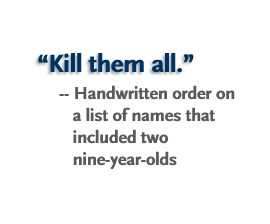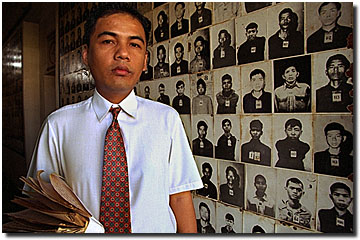 rom April 17, 1975, to January 7, 1979, the Khmer Rouge systematically tortured and exterminated millions of Cambodians. Like their genocidal predecessors in World War II, the Khmer Rouge kept fastidious records. Unlike the Nazis, however, the documentation has not been used to prosecute the mass murderers -- until now. The Cambodian Genocide Program, started in January 1995 by the U.S. Congress and run from Yale University, is creating a series of online databases based on the extensive evidence the Khmer Rouge left behind. The program's directors hope that putting such information on the Internet will encourage people everywhere who may have witnessed the atrocities to come forward, leading to international charges of genocide and crimes against humanity.
rom April 17, 1975, to January 7, 1979, the Khmer Rouge systematically tortured and exterminated millions of Cambodians. Like their genocidal predecessors in World War II, the Khmer Rouge kept fastidious records. Unlike the Nazis, however, the documentation has not been used to prosecute the mass murderers -- until now. The Cambodian Genocide Program, started in January 1995 by the U.S. Congress and run from Yale University, is creating a series of online databases based on the extensive evidence the Khmer Rouge left behind. The program's directors hope that putting such information on the Internet will encourage people everywhere who may have witnessed the atrocities to come forward, leading to international charges of genocide and crimes against humanity.
|







